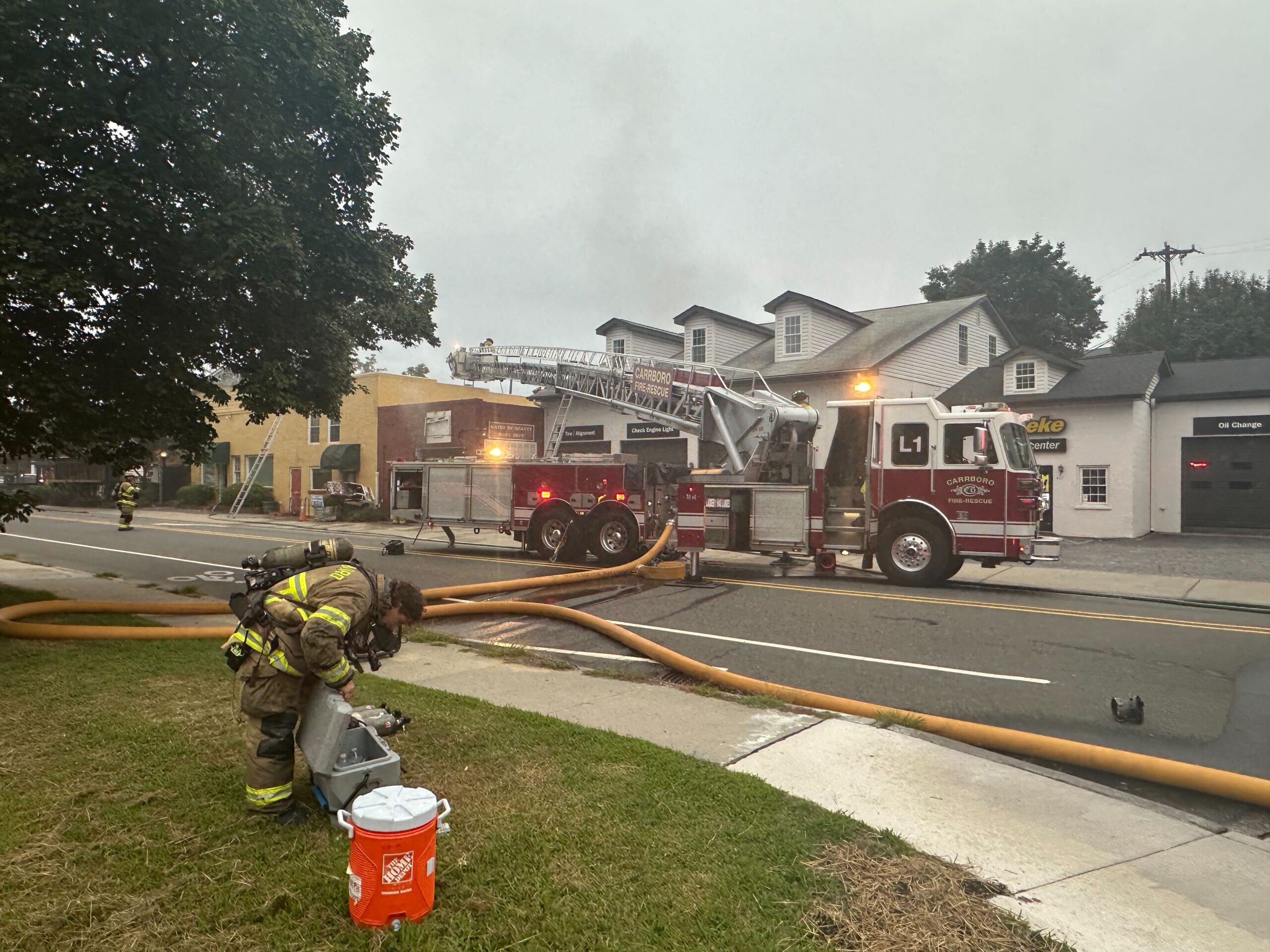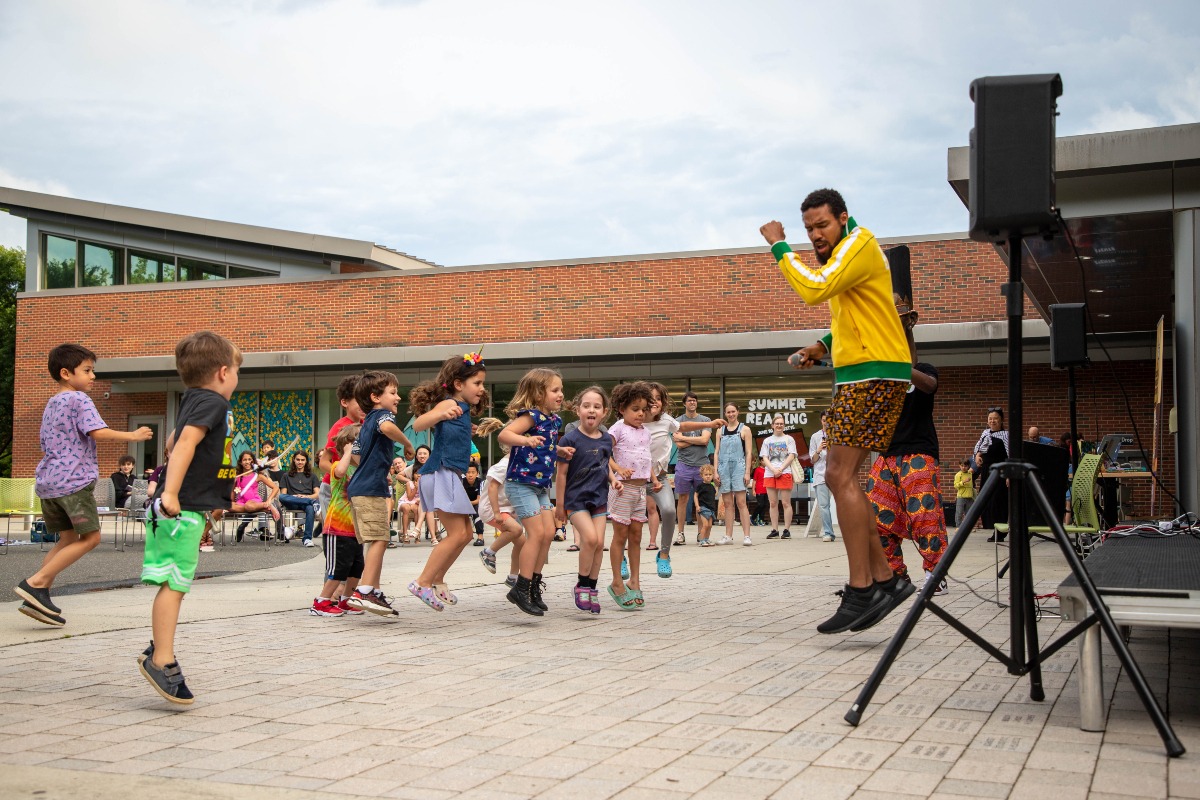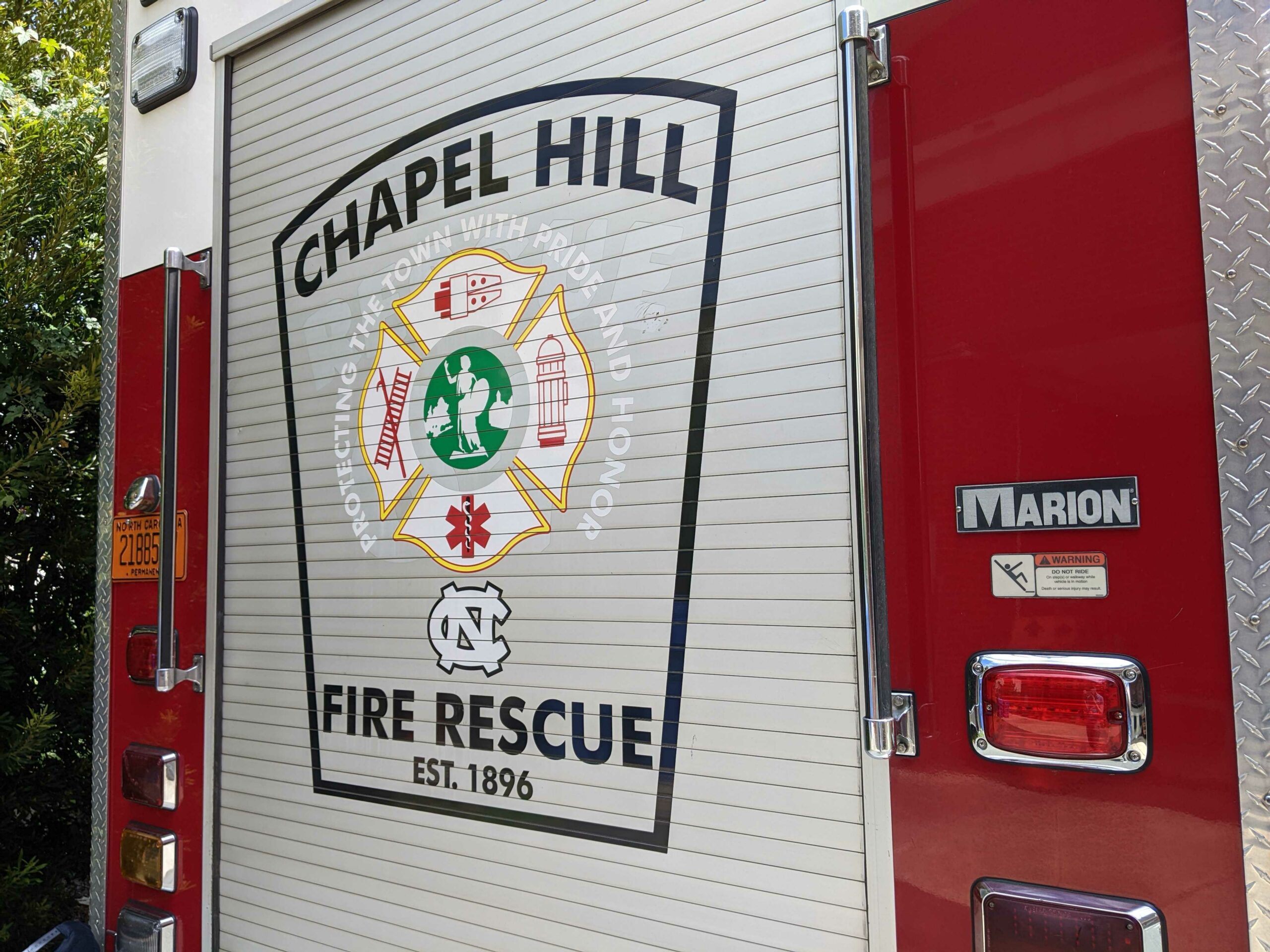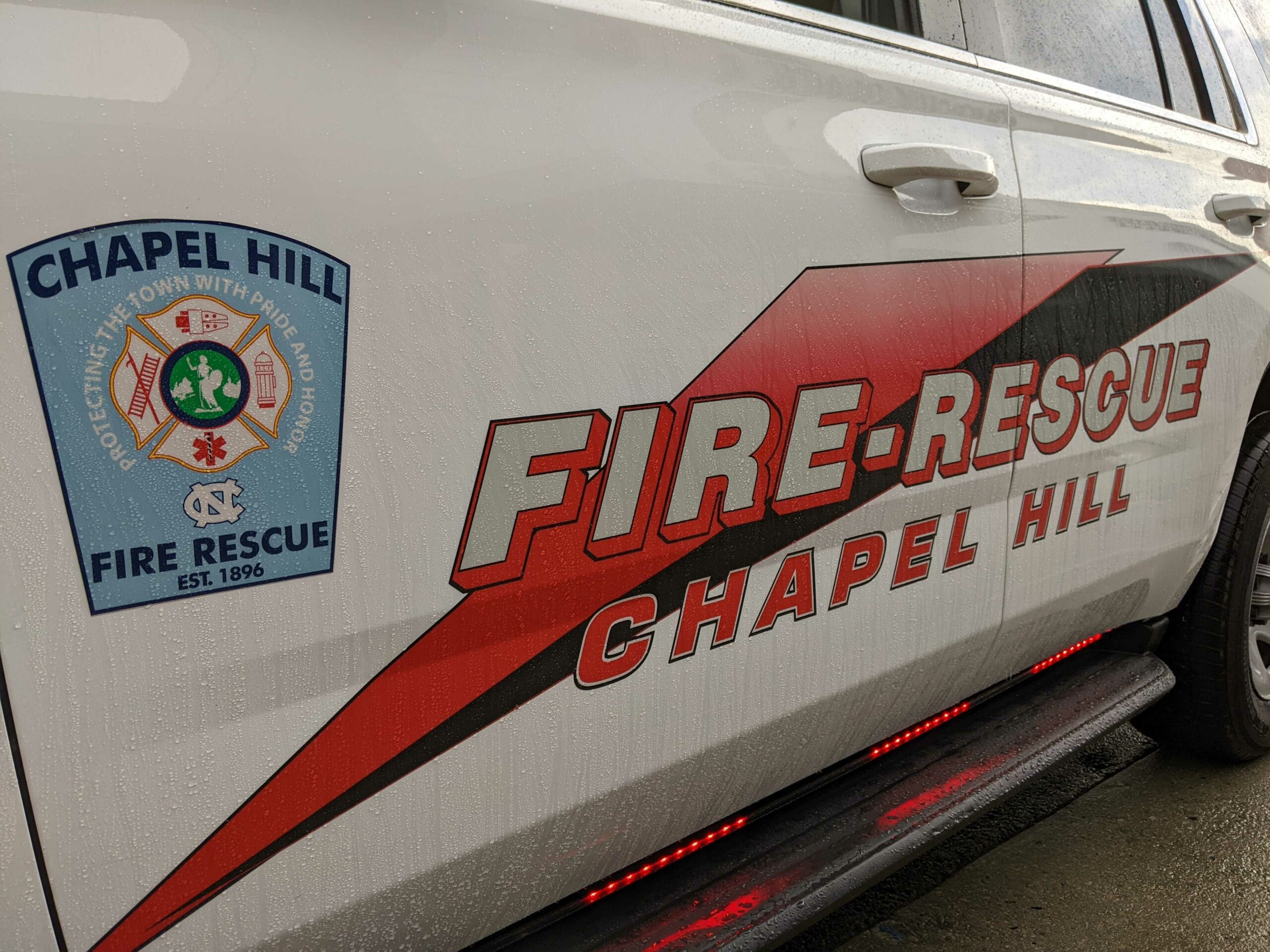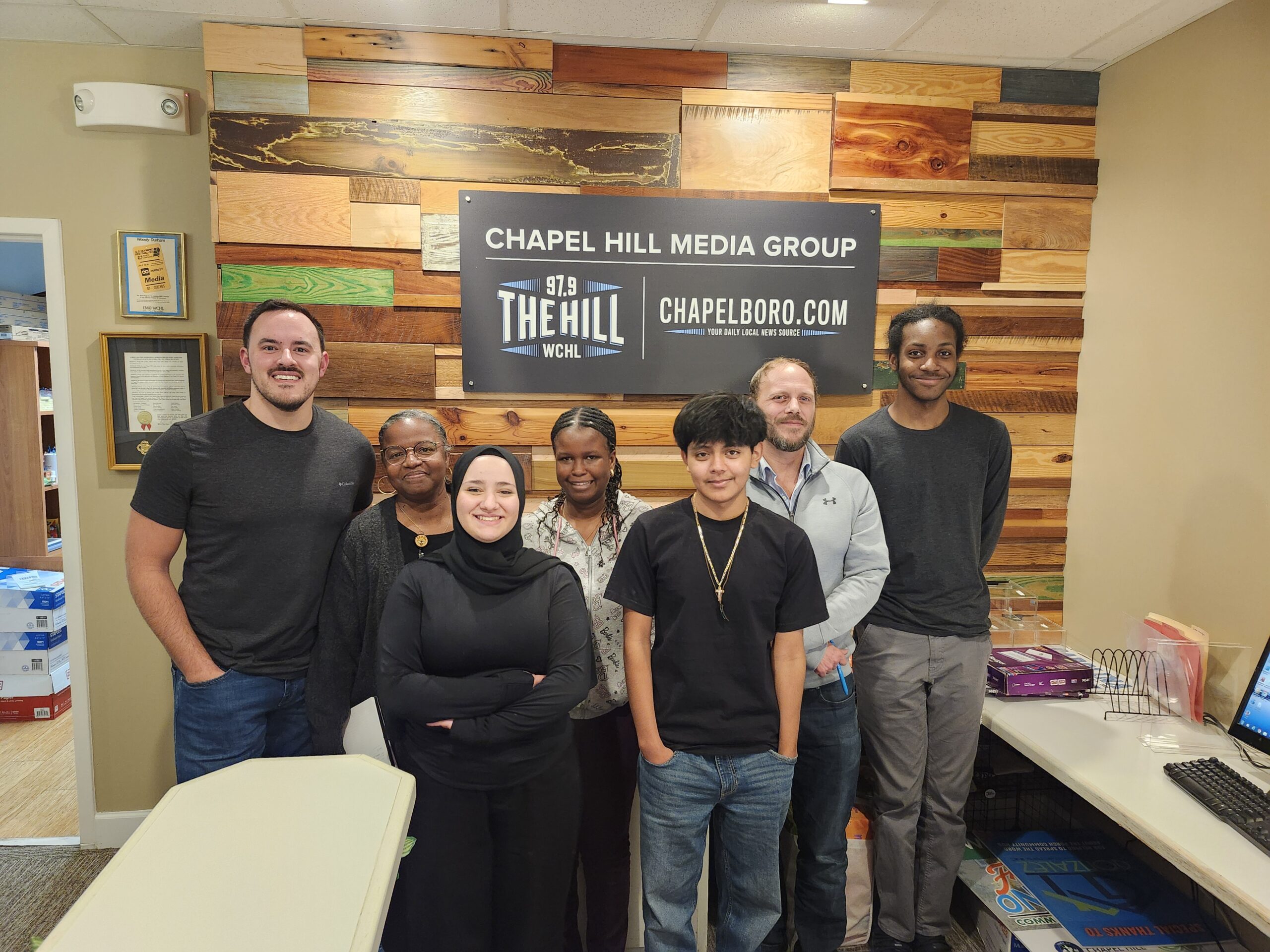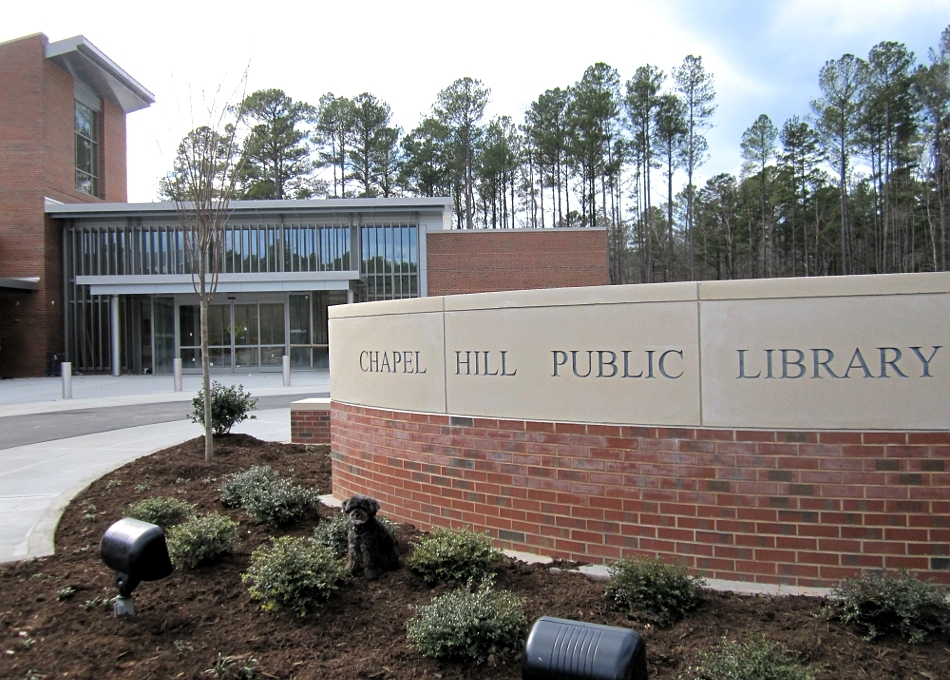Firefighters are pretty much experts when it comes to teaching fire safety. But math and science might be some of their lesser known skills.
“The general population, doesn’t think of firefights as being mathematicians or scientist or engineers,” said Stephanie Halpin, the STEM Coordinator for Granville County Schools.

Chapel Hill firefighters explain the gear they use. Photo via Erin Wygant.
She coordinated with the Chapel Hill Fire Department and the Chapel Hill Public Library to host “Sci Why,” an interactive event to teach kids about the science, technology and math behind firefighting.
“Science, technology, engineering and math is what STEM stands for and there’s so much of that in firefighting but most people don’t make that connection,” Halpin said.
A group of twenty firefighters hosted the three-hour event where they taught kids about the equipment they carry and different ways to put out fires. The four hands-on stations emphasized the science and math behind their job, discussing equations, molecular structures and new technology that are all part of firefighting.
“We had two learning goals,” Halpin said. “One was fire safety, obviously. The other one was to help students make connections to science and math in their daily lives.”
Yan Kong brought her daughter to the event because she said she wanted to encourage an interest in science and math.
“Sometimes they think boys like cars and girls like dolls but I don’t think so,” Kong said. “I think everyone should be able to learn with anything for their future life.”
Dawn Towery brought her two sons to the event for a similar reason.
“We love the library, we love firefighters and we like science and math and technology, so we thought it’d be a great afternoon activity,” Towery said.
Her 10-year-old son Ian said he was curious about the science behind fires.
“I’m hoping to learn more about smoke because I know about particles and atoms but I don’t know much about smoke. So I want to know more.”
But Ian had other motives for learning about fire safety, too.
“In video games I like to set things on fire and then I have to put it out.”
“So maybe this firefighting class will help you with your video games?”
“Yes, by helping me find the source of the fire.”
The event included some experiments with household items.

Firefighters taught kids about density and mass using oil and water. Photo via Erin Wygant.
“What we have here is regular water and some regular cooking oil that your parents might use,” explained a group of firefighters. “And what we’re trying to figure out, is if we pour this blue water onto the cooking oil, will it go to the bottom or stay on top of the oil?”
The kids watched the water filter down to the bottom of the cup, leading to a discussion about mass and density.

Gill Corbett was the first to try on a fireman’s coat. Photo via Erin Wygant.
At a different station, children learned about the clothes fire fighters wear, and the science behind their protective qualities. Eleven-year-old Gill Corbett put on one of the firemen’s coats, which he said was the highlight of his day.
“My favorite part was when I tried on the coat. It was really heavy but still pretty cozy.”
His reaction was exactly what Halpin was looking for.
“I hope it gives them some excitement about learning,” Halpin said. “And I hope they can see some leadership in the community with some of the positive role models that are here.”
Halpin said she hopes to partner with the fire department again, much to Gill’s delight. When asked if he’d come back, he responded with a hearty…
“Definitely! Oh definitely.”

